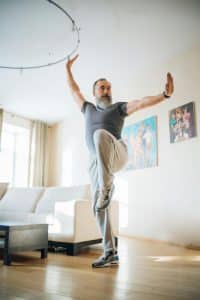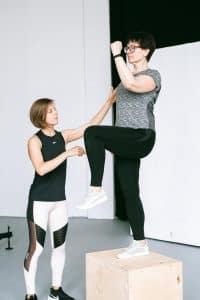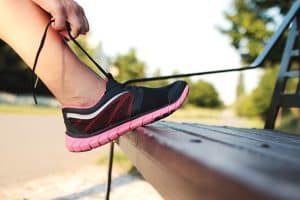Strengthen Your Ankles with These Easy Home Physio Exercises!
As we get older, maintaining our strength and mobility becomes increasingly important—especially in our ankles. Whether you’re walking on uneven ground, tending to your garden, or just getting about your daily tasks, strong ankles can make a world of difference. They help keep you steady on your feet and reduce the risk of injuries like sprains or even falls.
In this article, we’ll explore some simple exercises you can do at home to strengthen your ankles. These exercises are straightforward, require no special equipment, and can be done almost anywhere—perfect for those who live in rural areas or prefer exercising at home. Just remember, while these tips can be incredibly beneficial, it’s always a good idea to seek personalised advice from a professional for your specific needs.
Why Ankle Strength Matters
Everyday Activities Made Easier
The strength of your ankles plays a crucial role in everyday activities. Whether you’re out in the garden, walking on a gravel path, or simply getting around the house, your ankles are constantly at work. Strong ankles mean better balance and stability, which can prevent slips and falls, especially when navigating uneven surfaces.
I remember working with a lovely gentleman in his late 60s who lived on a small farm. He had always been active, but over time he noticed that his balance wasn’t what it used to be, particularly when walking on the fields. By incorporating a few simple exercises into his daily routine, he was able to regain confidence in his footing and continue enjoying his outdoor activities without fear of stumbling.
Preventing Common Ankle Problems
Ankle issues like sprains, stiffness, and general weakness are more common as we age. These problems can be exacerbated by a lack of movement or wearing unsupportive footwear. Strengthening your ankles with targeted exercises can help prevent these issues and keep you moving comfortably.
Simple Ankle Exercises to Do at Home
You don’t need fancy gym equipment to strengthen your ankles. These exercises can be done right at home, using just your body weight and a few household items for support.
Ankle Circles
- How to Do It: Sit comfortably on a chair, extend one leg out in front of you, and slowly rotate your ankle in a circular motion. Do this for 10 circles in one direction, then switch to the other direction.
- Why It Helps: This exercise increases ankle flexibility and improves joint mobility, making it easier to move in all directions.
Heel Raises
- How to Do It: Stand upright, holding onto a stable surface like a chair or countertop for support. Slowly raise your heels off the ground so you’re standing on your toes, then lower them back down. Repeat 10-15 times.
- Why It Helps: Heel raises strengthen the calf muscles and improve balance, which is crucial for walking on uneven ground.
Toe Flex and Point
- How to Do It: Sit on a chair, extend one leg out in front of you, and point your toes away from you. Hold for a few seconds, then flex your toes back toward your shin. Repeat 10 times on each foot.
- Why It Helps: This exercise enhances flexibility and strengthens the muscles around your ankle, which can help with balance and stability.
Ankle Inversion and Eversion
- How to Do It: Sit with your feet flat on the floor. Slowly move your foot inward (inversion) as if you’re trying to touch the inside of your ankle to the floor, then move it outward (eversion). Repeat 10 times on each side.
- Why It Helps: Strengthening the muscles on the sides of your ankle helps with overall stability, reducing the likelihood of rolling your ankle on uneven surfaces.
Single-Leg Balance
- How to Do It: Stand on one leg, using a chair or wall for support if needed. Try to maintain your balance for 20-30 seconds, then switch legs. As you improve, try doing this exercise without holding on to anything.
- Why It Helps: This is a fantastic exercise for improving balance and ankle stability, which can greatly reduce the risk of falls.
Making These Exercises Part of Your Routine
When and How Often to Exercise
For best results, try to incorporate these exercises into your daily routine. Aim to do them at least 3-4 times a week. Each session should only take about 10-15 minutes, so it’s easy to fit into your day.
Integrating Exercises into Everyday Life
You don’t have to set aside special time for these exercises. Try doing heel raises while brushing your teeth, or balancing on one leg while waiting for the kettle to boil. These small efforts can add up and make a big difference over time.
Tips for Keeping Your Ankles Healthy
Wear Supportive Footwear
Proper footwear is key to maintaining ankle health, especially if you spend a lot of time outdoors or on uneven surfaces. Shoes that offer good support can help prevent unnecessary strain on your ankles.
Stay Active
Regular movement is important. Even if you’re not doing specific exercises, try to stay active throughout the day. This could be as simple as taking regular walks or doing light gardening.
Listen to Your Body
It’s important to pay attention to how your body feels during and after these exercises. If something doesn’t feel right, it’s okay to stop and rest. If you’re unsure, consider consulting with a professional who can provide personalised advice.
If you’re looking for home physiotherapy in Norfolk or Suffolk, we’re here to help. Our experienced team offers in home physiotherapy tailored to your specific needs. Contact us today to book a consultation and start your journey towards stronger, healthier ankles.
Conclusion
Strong ankles are essential for maintaining your independence and mobility, especially as you age. By incorporating these simple exercises into your daily routine, you can improve your ankle strength, reduce your risk of injury, and keep enjoying the activities you love.
Remember, this article provides general guidance, but everyone’s needs are different. For personalised assessment and treatment, consider reaching out to us.



